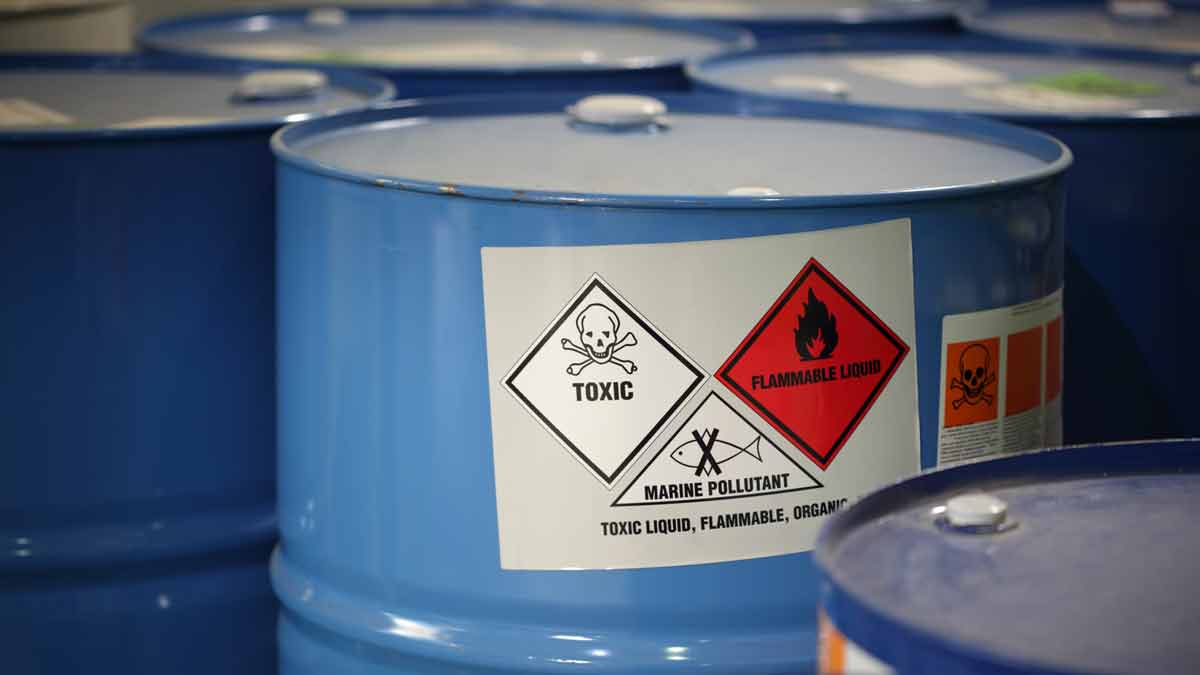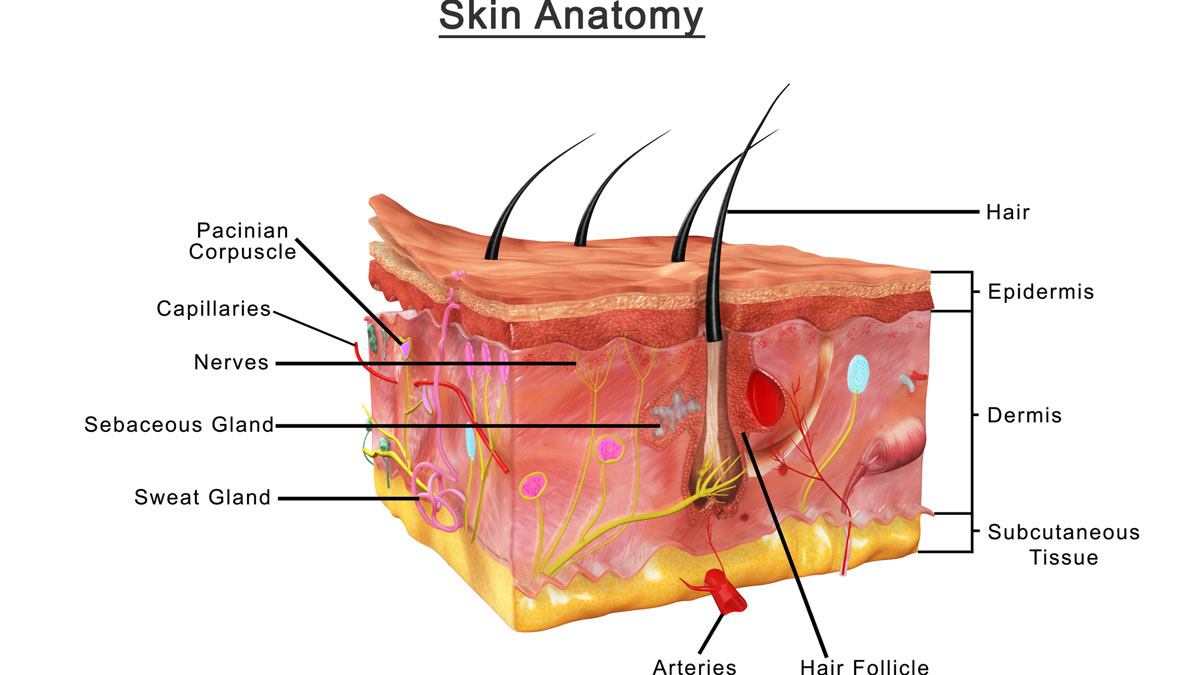Chemical Burns

Hello, my name is Eric Hageman. I am a lawyer who helps people with chemical burns determine if they can sue for compensation. This involves gathering evidence to find out what company is responsible and how workers’ compensation laws affect the case.
While any explosion can cause burns from heat, chemical burns are different. These burns are caused by caustic materials – such as acids, bases, and hydrocarbons – that land on your skin:
- Acids include industrial cleaners, oxidizing agents, and corrosive agents;
- Bases include potassium hydroxide, lime, sodium hydroxide, cement, and household cleaners;
- Hydrocarbons can include degreasing agents, solvents, and gasolines.
As with the more common burn injuries caused by heat, chemical burns can be first degree, second degree, third degree, and fourth degree. These chemicals cause damage because they coagulate, or denature, the proteins in your skin. The proteins are broken apart and change shape, which can destroy the skin or literally eat it away.

Chemicals can also burn your eyes, mouth, esophagus, and lungs, which can be life threatening or cause severe, permanent disability. Skin damage as a result of contact with chemicals can reduce your skin’s ability to protect you. This makes the possibility of serious infection more likely.
These burns are categorized according to their severity:
- First degree burns damage the outer layer of the skin;
- Second degree burns affect the first and second layers of skin;
- Third degree burns destroy the entire thickness of the skin; and
- Fourth degree burns, which are deeper than the entire thickness of the skin, damage the subcutaneous tissue, muscle and/or bones.
The burn will be more or less severe depending on the pH of the chemical, how concentrated it is, the length of time it is on your skin, and how much of the chemical touches you. Scarring can be severe with these types of burns.
Secondary injuries include damage to the kidneys, liver, and lungs.
OSHA (Occupational Safety and Health Administration) regulates how chemical usage safety in the workplace. Your employer has a responsibility to provide a safe work space. Employers must make sure that all employees working with chemicals have proper training, which should cover, among other things, OSHA standards and safe chemical handling.
Posters, labels, signs, safety data sheets, and color codes to warn of chemical hazards are required under the OSH Act, which gives OSHA the authority to regulate the use of chemicals in the workplace.
When a chemical burn occurs, the compound that caused the injury must be identified. Treatment of injuries can vary depending on the type of chemical involved in the accident. For instance, burns caused by acids should be neutralized with a safe base, while burns caused by bases should be neutralized with a safe acid.
Symptoms of these types of burns can include:
- severe pain
- difficulty breathing
- burns and blisters on the skin
- fainting
- shock
- seizures
- headache
- dizziness
- unconsciousness.
Types of Health Effects
The three major types of health effects resulting from chemical exposure to the skin are direct, systemic, and sensitization.
Direct Effects
Direct effects are problems that occur at the point of contact with chemicals. Some chemicals remove the natural oils from the skin, causing it to become very dry. The most frequent causes of dry skin are exposures to soaps, solvents, and moisture.
Some chemicals cause reddening, dryness, and cracking of the skin on contact. These chemicals are known as irritants. Irritation is most frequently caused by fiberglass, soaps, oils/cutting fluids, and solvents.
A permanent change in skin color may result when certain chemicals contact the skin. Chemicals that can cause this include tar, asphalt products, and some disinfectants.
Corrosive substances can cause severe or serious damage to the skin. A chemical burn can result from a brief exposure to a corrosive substance. Corrosive substances include strong alkaline (basic) materials or acids. Skin scarring is a common outcome.
Chlorine acne can be caused by either direct contact with chemicals, or absorption of certain chemicals. Chlorine acne may occur after exposure to chlorine compounds and certain pesticides.
Some chemicals found in the workplace can cause skin cancer. When these come in contact with the skin, a malignant tumor may form at the site of contact.
Systemic Effects
A chemical may enter the body through the skin, be carried by the bloodstream to different organs, and cause or contribute to a health problem somewhere else in the body. When this happens, the result is called a systemic health problem.
Systemic health problems can affect either a specific organ (liver, kidney, or bladder) or an entire body system (immune system, nervous system, respiratory system, or reproductive system). For example, paints and coatings contain solvents (such as toluene and xylene), that can cause liver and kidney damage.
Chemicals commonly found in the workplace can enter the body through the skin and damage the immune system, nervous system, reproductive system, or respiratory system. For example, some pesticides can enter the body through the skin and cause damage to the nervous system, and possibly lead to death.
Sensitization Effects
Chemical exposure may cause a person to become unusually sensitive to that chemical or group of chemicals. Reactions may occur from exposure to very small amounts of the substance. Once sensitized, a person will suffer an allergic reaction when exposed to that chemical. The only way to deal with this problem is to avoid any further exposure or contact with the chemical.
Allergic Contact Dermatitis
Allergic contact dermatitis is an allergic response caused when certain chemicals contact the skin. For example, epoxy resins, chromates, rubber chemicals, amine hardeners, and phenol-formaldehyde resins may cause allergic contact dermatitis.
Airway Sensitization
An allergic reaction of the mucous membranes or airways may result when certain chemicals are inhaled or are exposed to the skin. For example, skin exposures to isocyanates (contained in many paints and other building materials, like spray-on insulation and roofing materials) can result in airway sensitization.
Combined Effects
Chemical exposure to the skin may cause multiple health problems. For example, individuals working with cement may experience combined health problems. Contact with the cement may result in direct irritation at the point of contact from the ability of the cement to dry out the skin. Workers may also become sensitized to cement due to the chrome salts present in the material.
Treatment of Chemical Burns
Any type of chemical burn requires immediate medical treatment. The burn must be stopped before the patient can be treated. First responders flush the area with large amounts of water to dilute the chemical. Flushing can last for several hours. Once the chemical is diluted, treatment is started like any other burn.
Unfortunately, the environment in which the chemical burn occurred can also cause long term medical problems that aren’t immediately apparent. The vapors from the chemicals, if breathed in, may cause emphysema and cancer years later. Your attorney should know this, and request compensation for any future medical problems.
An Experienced Attorney Can Help
These burns are life-altering, and can be life-threatening. If you or a loved one were injured in a chemical explosion, it’s critical that you contact an experienced burn attorney to protect your legal rights. Corporations that use these types of chemicals have attorneys on staff to protect them, and insurance companies fight to reduce payouts; you deserve the same.
Damages from these types of injuries should cover medical expenses, the cost of rehabilitation, lost wages, lost earning capability, disfigurement, pain, embarrassment, mental anguish, and suffering.
The accident must be investigated and evidence must be preserved and catalogued. Our attorneys are experienced in these types of cases, and will help guide you through the complicated legal process. We know how to investigate the accident, what to look for in corporate documents, and how to interview witnesses. We will discuss your case with you to determine the best approach to take. There is no fee unless we win. Call us at 1-888-377-8900 for help.

Sources
- “Effects of Skin Contact with Chemicals: What a Worker Should Know.” CDC. Web. 12 Apr. 2018.
- “First Aid for Chemical Burns Topic Overview.” WebMD. Web. 12 Apr. 2018.
- “Best Practice Guidelines: Effictive Skin and Wound Management of Non-Complex Burns.” Wounds International. Web. Apr. 2018.



Leave a Reply
Want to join the discussion?Feel free to contribute!